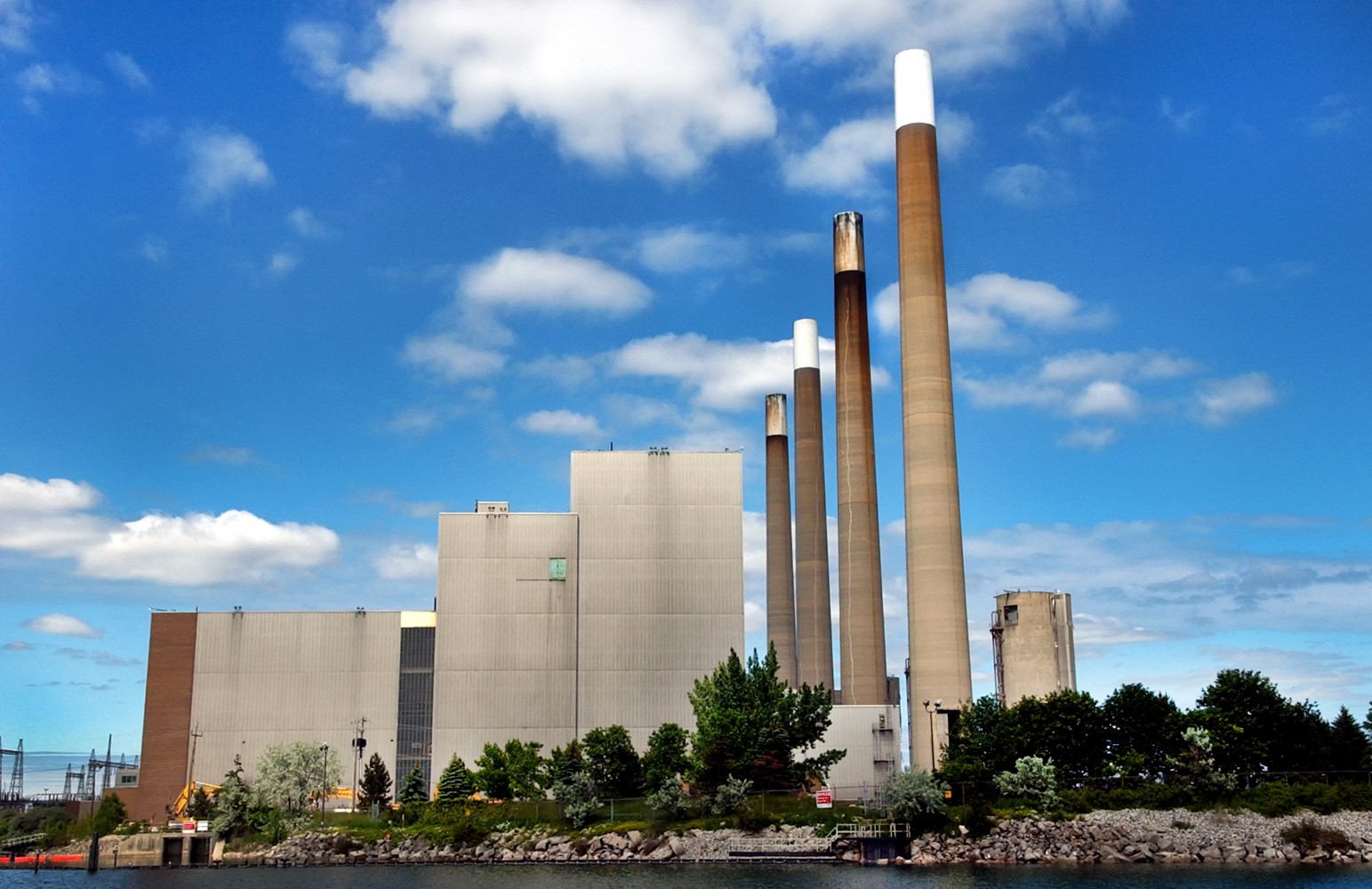
Long ago the province built a mistake on the Lakeview lands; is the City about to repeat history?
Between 1958 and 1962, the Ontario government erected a massive paean to our industrial age, the Lakeview Generation Station. It was either a wonder of technology or a monstrous mutation, a multi-tiered plant that fed greedily from a mountainous pile of dirty coal.
During the post-war era of industrial expansion, it produced 17 percent of this province’s power needs and thousands of high-paying jobs.
The plant’s arrival was as welcomed to the economically deprived village of Lakeview as a newborn to parents who tried for years to conceive.
But this was a wild child, a fire-breathing beast that excreted some god-awful effluents – coal-caked air, and carcinogenic fly ash that had to be buried in mass gravesites in nearby communities.
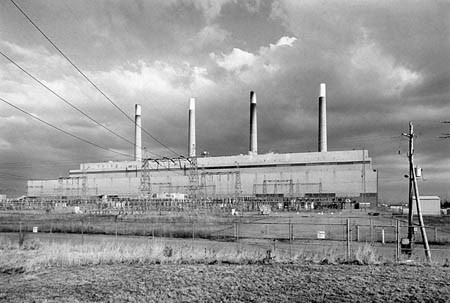
By the time Lakeview folded into modern-day Mississauga in 1974, the plant was displaying its true awfulness: dead fish floating belly up in Lake Ontario, soot-stained laundry hanging from the clotheslines of homes located in the shadow of the plant, and a forest of barbed-wire fencing with KEEP OUT!! and NO TRESPASSING!! signs dotting the property and denying local residents open access to the Great Lake.
The plant was a gift to those who were mad for power, but a curse to anyone living in its long shadow – a continuation of nearly 100-plus years of ecological degradation that has taken place in the southeast section of this city.
Then, on June 12, 2006, the shadow disappeared. In a made-for-TV moment that would forever be imprinted in this city’s collective consciousness, the walls (or in this case, the smokestacks called “The Four Sisters”) came tumbling down in a controlled implosion captured by cameras in helicopters buzzing overhead. The stacks fell like bowling pins, one every four seconds, from east to west. This lovely symmetry was replayed in an endless loop on news channels all over the world. A year later, when the body of the plant was brought down as well, it was as if “The Lakeview Project” had finally choked to death on its own coal dust.
It signified that the industrial age had reached its best-before date.
The locals had their ‘Lake’ and their ‘view’ back.
But only temporarily, explains John Danahy, 65, a resident of the area since 1983. It’s early afternoon on the first day of the Labour Day weekend, and the father of two university-aged daughters and a son is sitting in a local pub in downtown Port Credit, opening himself up during a sit-down interview with The Pointer. Danahy is now a professor emeritus at the University of Toronto, co-director of the Centre for landscape Research (CLR), and an urban design expert with ties to the Knowledge Media Design Institute at U of T. He’s done numerous research for the National Capital Commission in Ottawa-Gatineau, the City of Ottawa, and Toronto, but his legacy will be here, on the Mississauga waterfront. His technical expertise was critical in the visioning of the Lakeview Legacy Project, the winner of national urban design awards from the Canadian Association of Landscape Architects and the Design Exchange.
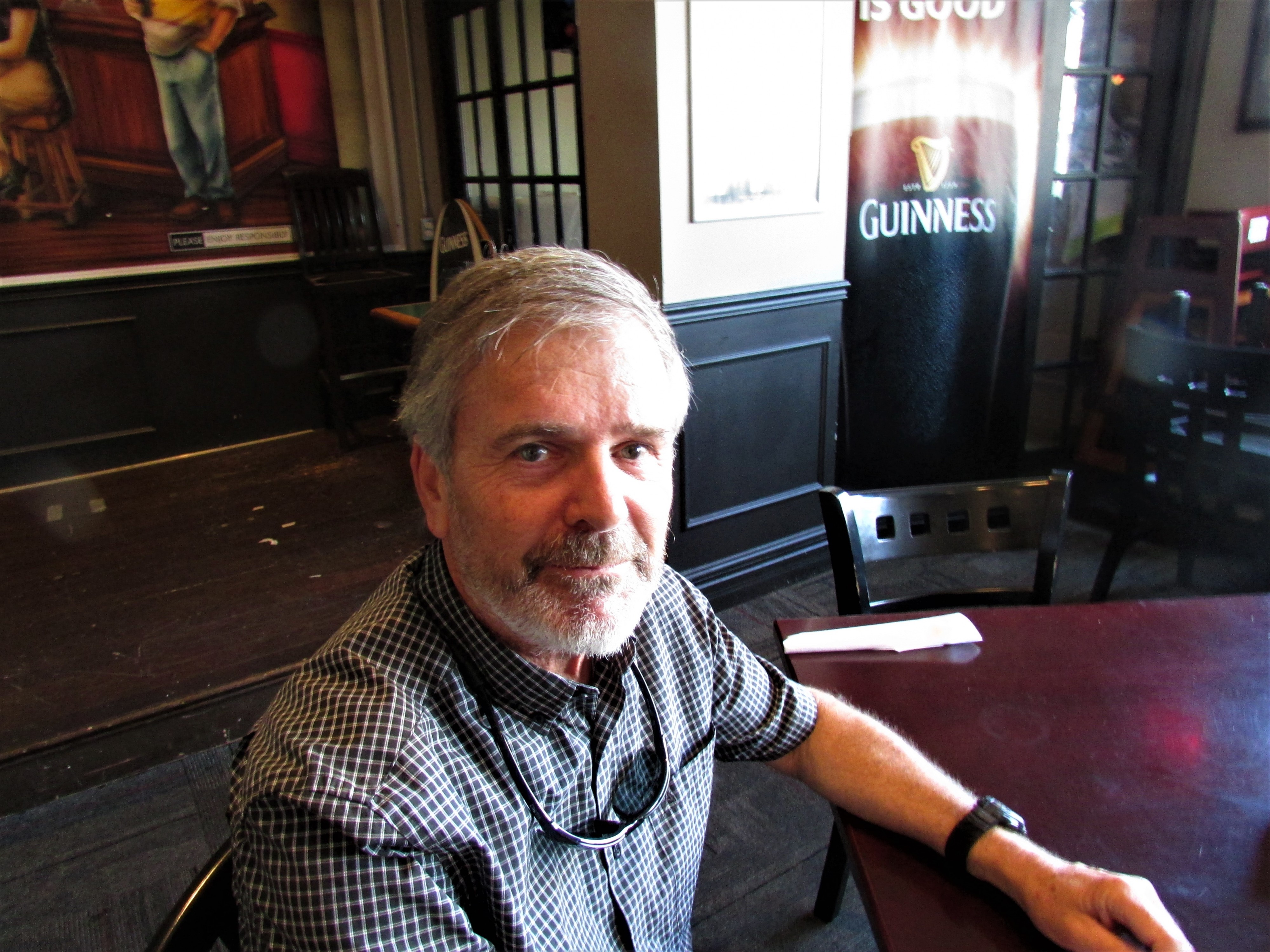
Mississauga resident and landscape architect John Danahy
In the immediate aftermath of the controlled explosions that felled the Lakeview power plant, Danahy was recruited to advise on the Lakeview Ratepayer’s Association (LRA) by a pony-tailed carpenter who liked to play rock music on the side and lived only a block away on Montbeck Crescent. Both lived a few steps from the briny shores of Lake Ontario. Tovey wanted to resurrect the moribund LRA and when he knocked on Danahy’s door one day, he asked if he would like to join this grassroots advocacy movement. This wasn’t exactly Lennon meeting McCartney, but if Tovey was the heart and soul of the movement, Danahy was the one with the professional skills – the geek working with computer software.
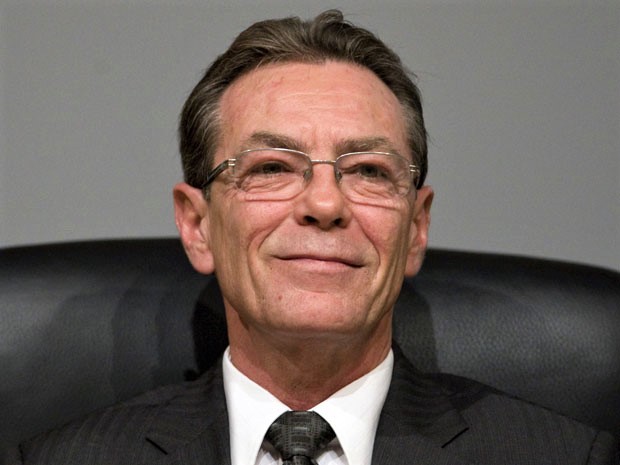
Former Mississauga councillor Jim Tovey
After explaining that the LRA wanted to resurrect the old hydro lands to their original organic loveliness and give the residents back their lake, Danahy was all in. The men agreed that any development should be driven by and for the people who had been shut out from this land and watery playpen for too many years.
A key aspect of the LRA’s game plan was a piece of computer modelling software that Danahy and others had developed at the Centre for Landscape Research (CLR). It showed experts and laypersons in graphic detail how density and finances translate into designs and test scenarios. These two models are seldom modeled in real-time, even by professionals (including city planners) so, from the get-go, the LRA was ahead of most everyone on the professional curve. “Too bad Mississauga didn’t adopt this approach in reviewing development applications in the past,” says Danahy digging into a pint of Guinness.
Danahy’s role as academic researcher was provided pro bono, including advising and educating the LRA on planning, design, architectural issues, and the environmental aspects of the new conservation area in the eastern end of the property that linked with the nearby Etobicoke shoreline. This land would later become a $52-million reclamation by the Region of Peel, Credit Valley Conservation and the Toronto Region Conservation Authority. It would create a thalamic bridge between three new watersheds to the east and the Lakeview Legacy Plan.
This plan had been brewing in the minds of Tovey and the resident’s association, and Danahy built the software and the modeling to bring it to life.
Their plan was brilliantly conceived; it was sent to council and was adopted into the city’s master plan for development. It was to be built on a human scale (what other scale is there? asks Danahy), and was to be a 180-degree turn from its polluted past. This would be something for our children and our children’s children, too, Tovey told Danahy.
Early renderings of Lakeview's more human-scale potential
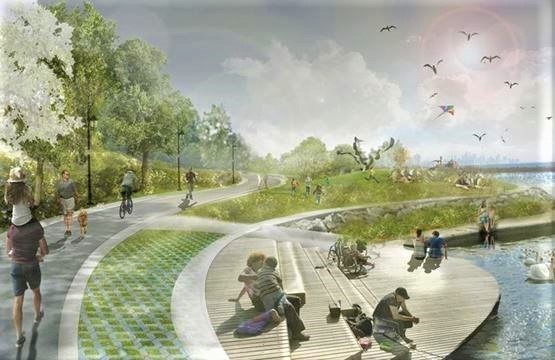
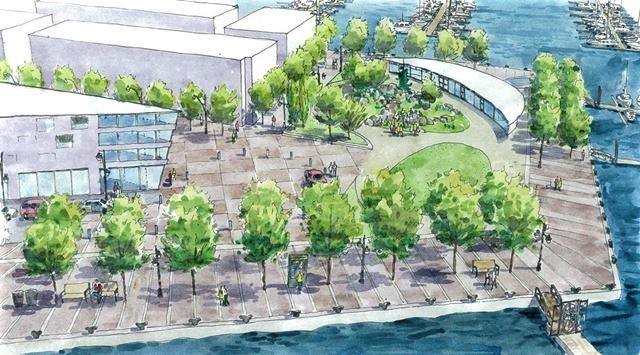
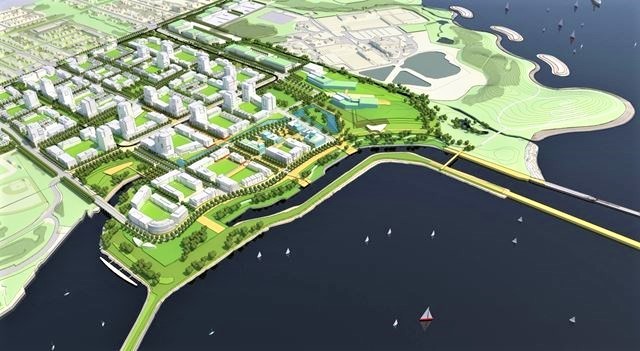
Tovey was named the city’s Citizen of the Year, and eventually, he got to put the LRA plan into action as the councillor for Ward 1. His victory was by a tiny margin in 2010, greatly expanded by 2014, and promised to be even bigger in 2018. Tovey was widely popular, but tragically died ten months before the ’18 municipal election of a massive heart attack. It was a shock to the community, and a stunning reversal of fortunes for the LRA.
The Lakeview Legacy plan has never really recovered.
That’s what Danahy was here to talk about: the way the original LRA proposal has stalled in council; and to comment on a new plan put forward by a consortium called Lakeview Partners. It isn’t anywhere near the smaller scaled LRA one, which was basically conceived to give the lake and the views back to the citizens. It would also provide a made-in-Mississauga model, not based on the profit motive, but livability, community gathering and cultural touchstones. It hoped to create a bond between Mother Nature and the new development model.
The entire idea was that Mississauga would not repeat the mistakes of so many world cities whose breathtaking waterfronts are now walled-off by glass and concrete.
Danahy is afraid that Tovey’s conception of Lakeview died with him when he passed in early 2018.
He calls the months after his death “the dark period” in the citizens’ reimagining of Lakeview’s waterfront.
Says Danahy: “This is a multi-chapter saga full of ambivalence and faint citizen hope swimming in a soup of greed, self-centred politics, and administrative indifference.”
When his friend and colleague died, he says, something died with him – the hopes of a community-driven land-use plan. Mississauga has reverted to its time-worn pattern of political behaviour – allowing developers, not city planners or the citizenry, to create neighbourhoods.
Danahy takes a sip of Guinness, then adds, “Mississauga has just one chance to get this right – or to get it so very wrong.”
Yes, in fact, Lakeview Partners, a consortium of building industry experts, purchased the OPG lands for $275 million, and created a development master plan called Lakeview Village, a mixed land-use community that features residences, walkways, a lake for skating in the winter and other amenities that are featured in most high-scale communities located in urban centres near major waterways.
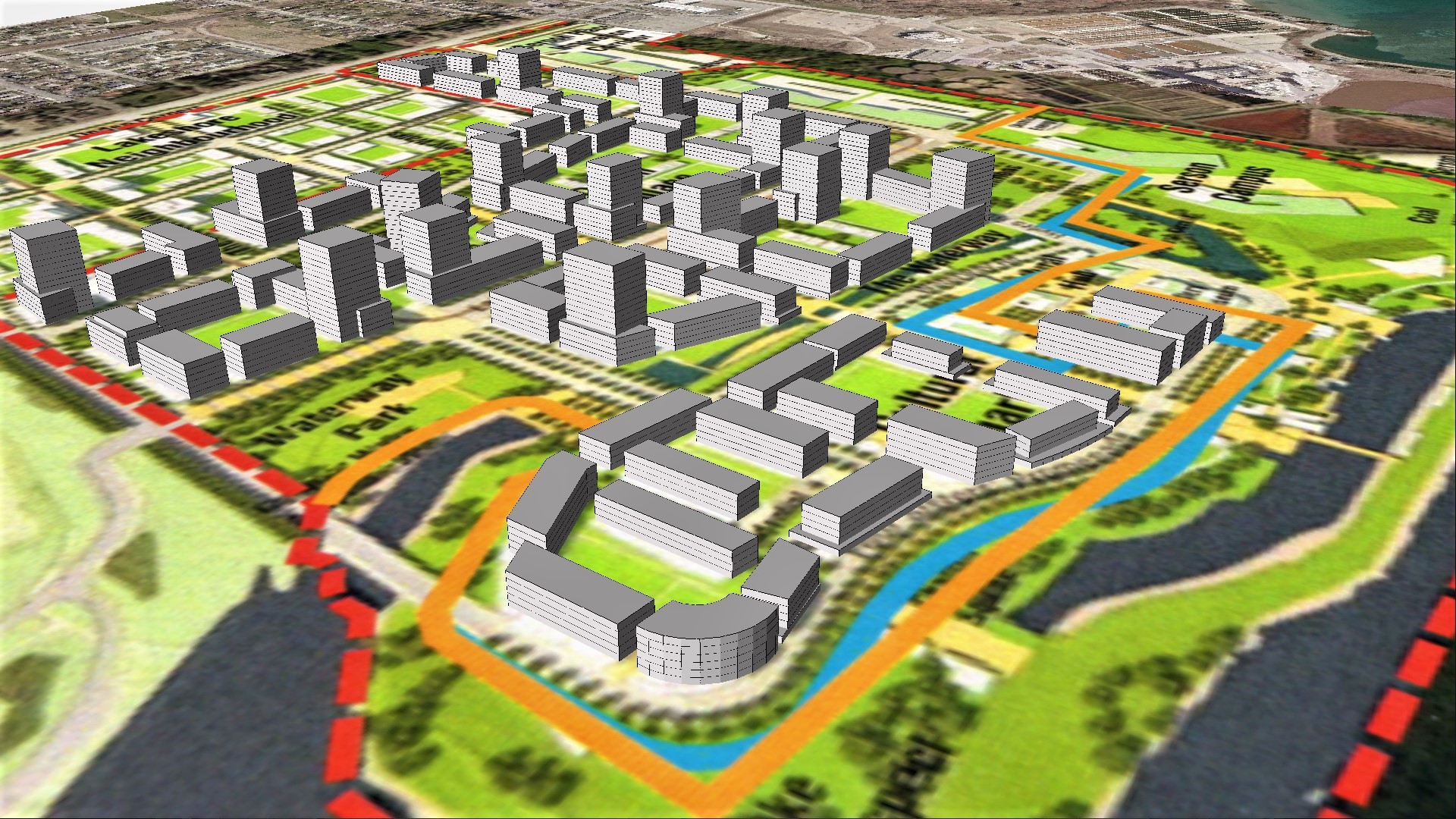
Model 1
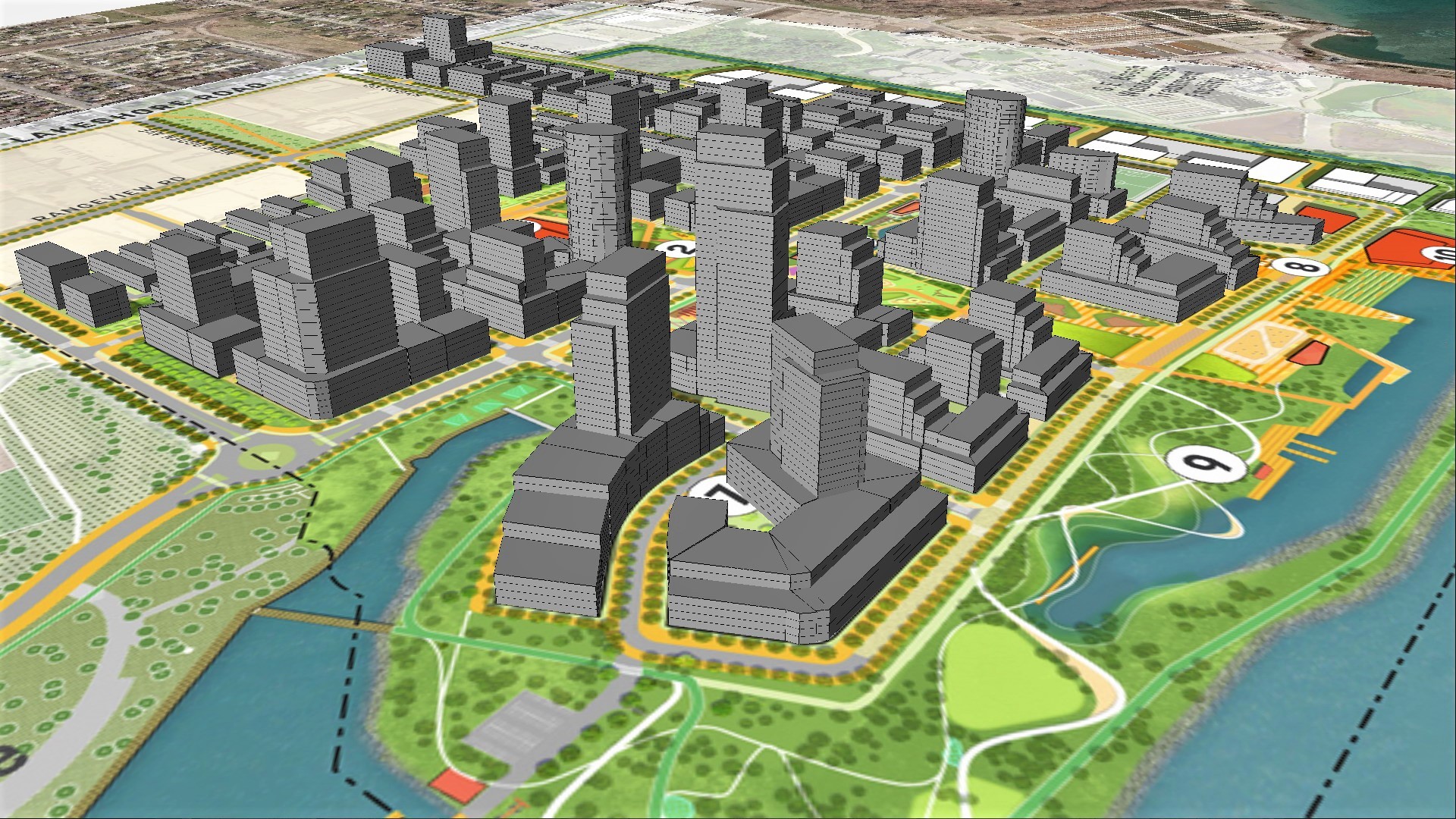
Model 2
As readers can see from a comparison of the original Inspiration Lakeview plan (Model 1) and the new 3.0 Lakeview Partners master plan (Model 2), the differences are stark. The original is lighter on units, with well-defined height restrictions that keep buildings from being erected too close to the lake. This step-up style of development allows a clearer view of the water and doesn’t make people feel as if they are surrounded by nothing but glass and steel. There are also more green spaces and community buildings, and there’s also a raw, natural, ethos about the connection to the nearby community and wetlands.
The 2.0 and now 3.0 plan conceived by the new architectural firm Sasaki, out of Boston, is poised to make hundreds of millions of more dollars for the Lakeview Partners, while altering the original design. This new intensification still needs passage in council, but if the parties can’t come up with a deal, there’s another danger looming, explains Danahy.
The provincial government, under Doug Ford, recently spun out the Local Planning Appeal Tribunal (LPAT) from the old Ontario Municipal Board (OMB). The LPAT, created under the Kathleen Wynne Liberals, was intended to give more planning authority to municipalities. But the Ford PCs have reverted it to the OMB model, which was developer friendly and once again features a mediation framework that takes much of the decision making out of the hands of many stakeholders. It allows developers or cities that fail to make a deal, to run out the clock and go before an LPAT “tribunal.” Danahy says it has the power to blow the doors off of height or unit restrictions and allow something like the massive Humber Bay Shores project to take over the Lakeview lands.
He thinks “the LPAT De Novo hearing simply undermines local democracy.”
A De Novo hearing means the decision-making authority deals completely afresh with a matter that has already been heard once before, either by that or another authority.
Yes, the citizens of Lakeview might lose their ‘lake’ and their ‘view’ again!
A Lakeview Advisory Panel, put together after Tovey’s death, will hold a key meeting on Thursday, Sept. 19 at the Army Navy Air Force building on Third Street in Lakeview (upstairs auditorium) with doors opening at 6:30 pm. It’s to discuss the new plans by Lakeview Partners. Danahy says the mood seems rather grim these days; there’s been very little communication between the city and the residents since Tovey passed.
Danahy is a big fan of new Ward 1 councillor Stephen Dasko, a Tovey acolyte and long-time businessman who helped run his campaigns. “But he is only one voice,” he says, “and he has one of the busiest wards in the city, with multiple development projects going all at once, including the Port Credit marina/harbour re-do, and the giant Imperial Oil project currently in remediation at Mississauga Road and Lakeshore Blvd.”
The massive workload, says Danahy, is one of the reasons why he thinks his old friend and colleague was under such stress. “Jim could never say no to any meeting. Never."
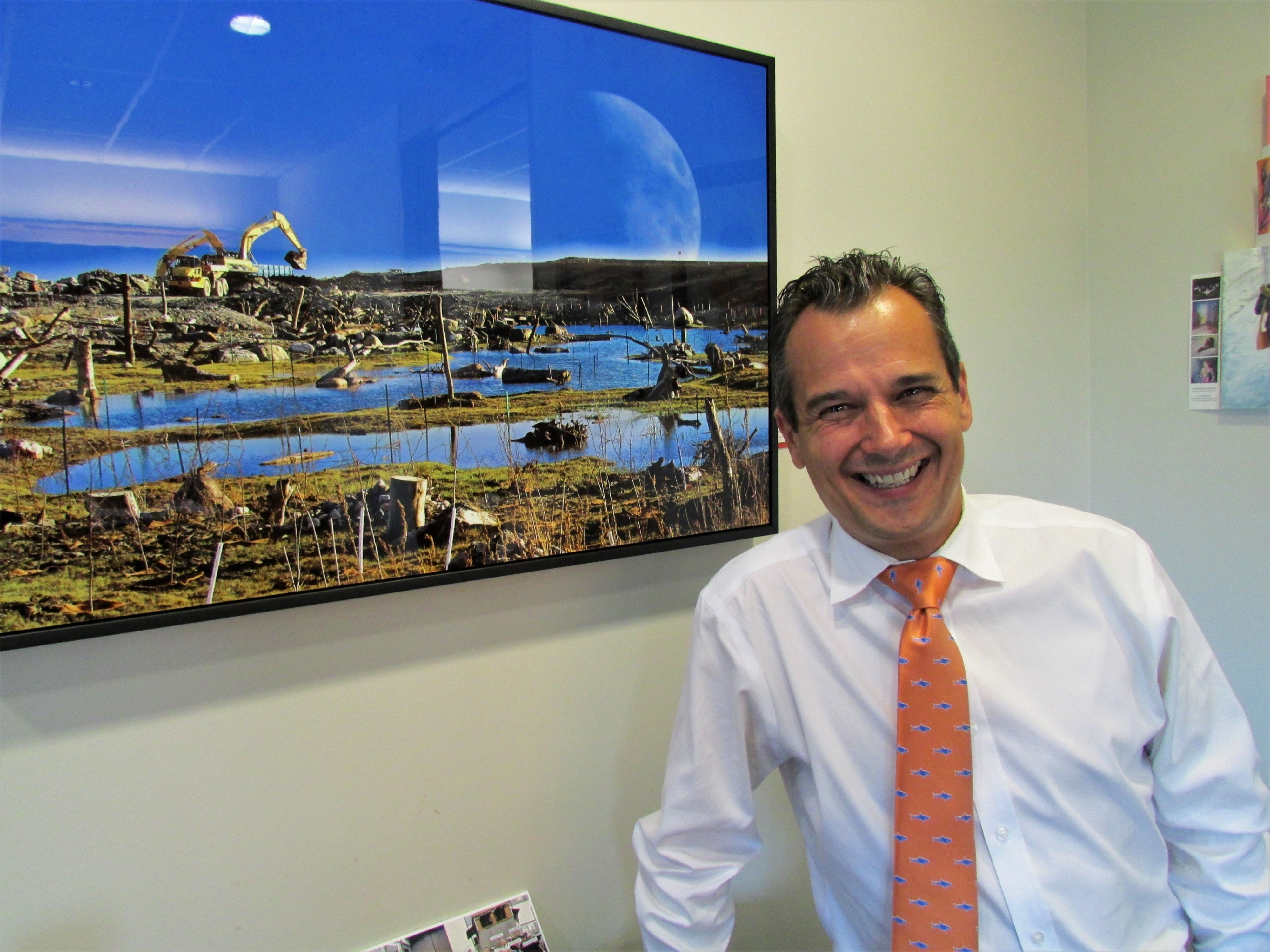
Ward 1 Councillor Stephen Dasko
Dasko told The Pointer he is concerned with the goings on in Lakeview and doesn’t want to see another Humber Bay-like project cozying up to the lakefront, with buildings reaching for the sky and blocking the community from its water. He likes the Chicago model of step-back development, that takes a gradual approach, and keeps the lake free of skyscrapers.
The Tovey-Danahy-LRA model is made-in-Mississauga and fits both the needs of the present and the future. Karen Ras, the Ward 2 councillor whose office on the third floor of city hall is located right next to Dasko’s, has a compelling interest in what happens in Lakeview. She is chair of Credit Valley Conservation, currently engaged in the Region of Peel’s giant $52-million wetlands renewal on the eastern edges of the former OPG site. She agrees that any waterfront re-do should be tied to local needs. Her ward runs along the entire western flank of the city’s waterfront, and protection of this necklace of land and water must be a high priority of council. The CVC has its own Shoreline Management Plan and how the city and the conservation authorities choose to develop will impact greatly on current and future generations.
The danger, of course, is to create an urban model that, a decade from now, critics will view as a lost chance to do something better, a more lasting legacy on the land and water. This one-chance-to-get-it-right mantra should drive every councillor’s decision on the city’s land and water usage, she says.
“We certainly need time to get it right, and to make sure it [Lakeview] fits the City’s Master Plan.”
OPG began working with Queen’s Park and Mississauga to develop a shared vision for what was dubbed 'Inspiration Lakeview'. After an RFP process adjudicated by the city, Lakeview Community Partners Ltd. (LCP) was selected as the development partner and purchased the land for $275 million. This consortium of five GTA development and construction companies, and 12 external consultants, has pitched their master-planned vision for the future, and rechristened it ‘Lakeview Village.’
The Inspiration Lakeview Master Plan called for the 245-acre brownfield site to transform to a mixed-use community with a variety of residential building types, parkland, cultural and employment uses, with buildings featuring environmentally sustainable designs. In the sale, 67 acres will be remediated and transferred to the City.
LPC selected Sasaki, the Boston-based design firm, as master plan architect after an extensive search involving more than 30 local and global firms.
Dennis Pieprz, a principal with the firm and its chair of design, eagerly responded to The Pointer’s request for an interview, saying there are few palettes of land in the world with such an extensive waterfront and wetlands on which to paint a new community.
He and the Sasaki team met with residents in June of this year to explain their new plan.
“From the moment we were introduced to Lakeview, we recognized the significance of the project,” he says.
The firm has worked on brownfield projects across the United States and around the world, from Portland to Vina Del Mar in Chile to Beijing. Lakeview is one of its largest sites.
“This”, adds Pieprz, “presents a tremendous opportunity to create a new district that can open up accessibility to the lake, to the waterfront, in an area that has been inaccessible for decades.”
Sasaki’s team thinks the size of the site allows it to think of it as an array of parks and public spaces organized in a bold urban framework that makes all the desired connections and establishes a mix of uses that can define a new kind of district for Mississauga.
Pieprz says that through the design process, working with the client, city agencies, stakeholders, and community groups, “we aim to make Lakeview a model of 21st century city building.”
The focus is on mobility options, sustainable and resilient design, smart city thinking. It should be a destination for people from Mississauga and the region.
The community engagement process was a learning opportunity, he says, “and as we debate the merits of ideas and concepts, we are also able to share our experiences and knowledge gained from working around the world on waterfront transformations and urban place-making.”
He sees Lakeview as a beautifully designed public realm, where people can participate in cultural events, work at innovative companies, sit at a café overlooking an active waterfront benefiting from smart technologies and contributing to a healthy and sustainable future.
The process to hire Sasaki began in 2018 when a rigorous interview and proposal process began. The plan is to improve access to the lakefront, and right-size some of the public spaces.
“We found the Lakeview team shared our values and interest in design quality, sustainability and community building."
Says Pieprz, in conclusion: “Lakeview has the potential to be a global model for how to do things right.”
Or wrong.
Danahy says “Inspiration Lakeview” was based on 5200 units. The latest plan by Lakeview Partners calls for nearly double that.
Danahy says Tovey always had a saying he passed on to developers: “If you buy the land, you buy the plan.” But the Lakeview Partners weren’t interested. They wanted more. More buildings. Higher ones. And closer to the lake.
Danahy’s complaints are laid out carefully, and have been whittled down to five key points:
• the masterplan did not show or model the possibility of a 22-storey tower as a landmark somewhere in the southwest area of the space;
• a tower was only supposed to happen with a study and public engagement, since the community voiced consistent objection to it at the waterfront precinct;
• the height on the site was to “step up for the waterfront” with a 15-storey (possibly 22-storey height when it “earned the sky”) and then step back down to a linear heritage park at Lakeshore Road, that would act as the transition to the rest of Lakeview;
• the parks and the built form design in LCP’s 3.0 scheme do not follow very many of the principles or ideas that the citizens put on the table and initiated; and
• most of the hopes for a village scale waterfront and mid-rise human-scale community at the heart of Lakeview, appear to have been abandoned.
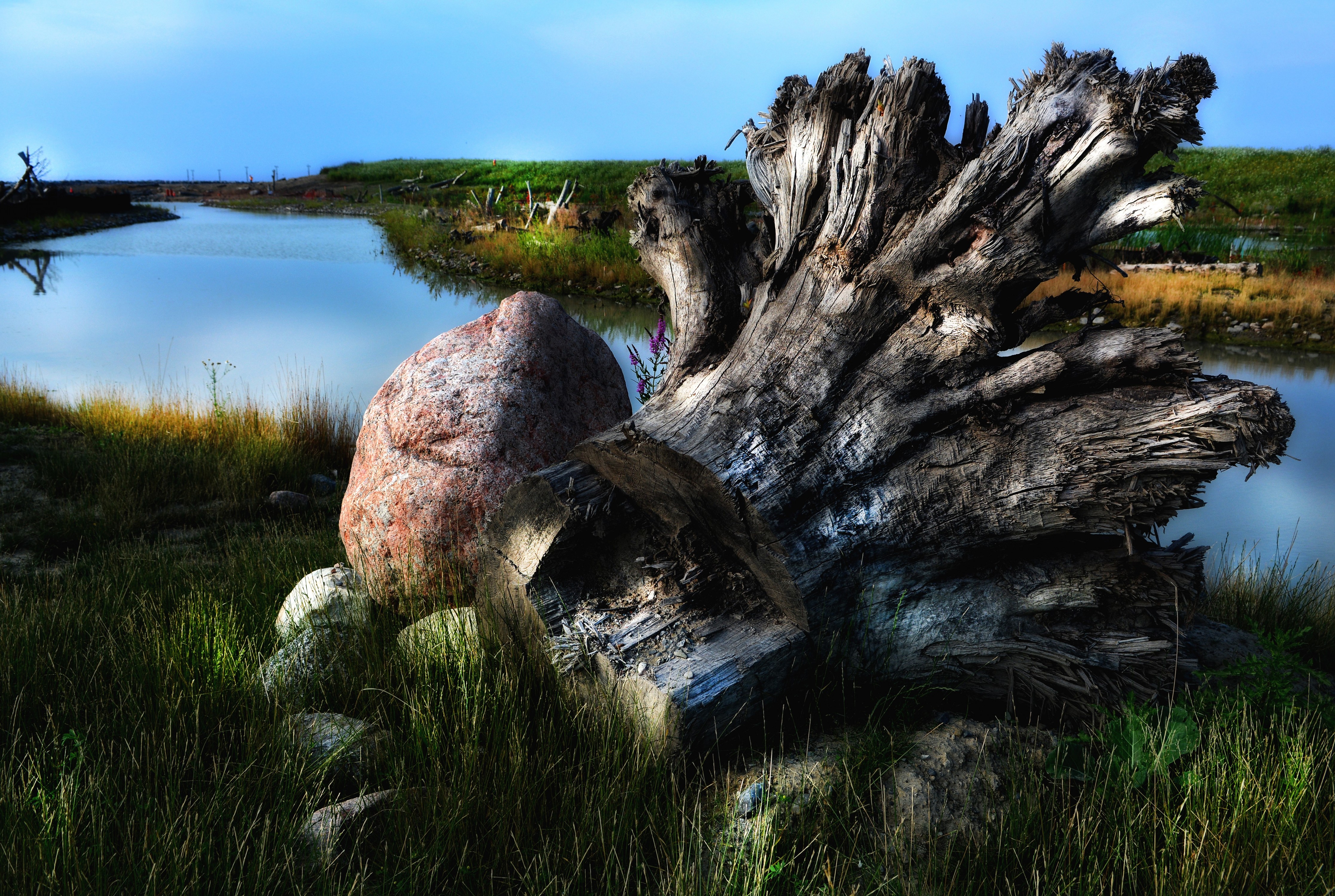
Danahy says the community is now trying to rescue the last big hope for a human scale waterfront park where the sky and the trees and the lake are the dominant visual element of a person’s experience.
“Everyone agreed that it should not mimic Toronto’s Humber Bay Shores which present an architecturally dominating experience looming over the park user,” he says. “Tall building would happen, but not in the waterfront precinct and park, and not 30-40 storeys.”
The original Inspiration Lakeview was a vision accepted by Mississauga council and Queen’s Park, and leading the cheers were Mississauga Councillor Carolyn Parrish and former local MPP and Liberal finance minister Charles Sousa.
Danahy thinks the Mississauga councillor never got the proper recognition for her work in pushing the Lakeview file, and he would like to see her energy and smarts be re-engaged with the original concept to ensure that the city and the local residents get what is owed to them – development that is designed for people, not to fill the pockets of developers (the bad old Mississauga model).
Danahy considers any give-over by council to a 3.0 Lakeview Village plan, a betrayal of the original concept which was based on local residents coming up with their own development model. He speculates that with millions being poured into wetlands restoration, that will surely satisfy environmentalists. The higher-densities are also in keeping with the “smart growth” principles put in place by the Dalton McGuinty Liberals. At the same time, the Lakeview smokestacks were falling down, and former mayor Hazel McCallion was starting to approach planning in a way that contradicted her “Queen of Sprawl” legacy.
But this higher density plan, with bigger buildings moving closer to the lake, “has totally destroyed my faith in the planning profession,” says Danahy. He looks at the Humber Bay Shore project in Etobicoke and the enormous forest of condos strung along Toronto’s waterfront as a design model that is anti-people and pro-profits. Some may appreciate the skyline views of glass and beige and steel blue, others simply see an eyesore.
He says, “this push to create vertical communities wasn’t made to work for the citizens, but to work for the money.”
Have the residents of Lakeview been duped again – like they were in the late 1950s when the brainiacs at Queen’s Park built a coal-fired power plant in the middle of what would soon become a major urban area and ultimately destroyed any connection the citizens had to Lake Ontario?
Danahy thinks Mississauga’s current leaders “misunderstand Jim’s vision. They don’t see that it wasn’t about him, or his ego, but it was always about the citizens of Lakeview. It started and ended with kitchen table discussions. The underdogs of Lakeview did it. Thanks to Jim’s passion and brilliance, he started the dialogue, but he left the creation of a vision to the people who were not thinking about themselves, but wanted to serve their children, and their children’s children.”
Danahy translated the original Lakeview Legacy project into plain, graphic language so residents and councillors could understand it. It was so compelling it made politicians like Parrish pick up the baton and carry it forward as an example of grassroots advocacy working the way it should work. It was always about keeping development at a human scale. In 2008 she said before council: “This is people power; this is democracy in action.” But she’s now too busy with projects in her own Ward. A new generation of warriors needs to step up.
The latest plan calls for double the units of the original model, with less green space, fewer community outreach buildings, and more and higher buildings to block out views of the lake.
The infusion of thousands of people into Lakeview Village is sure to create gridlock along Lakeshore Road, and while the area will be a-buzz with life, it could have been so much more, laments Danahy.
“Jim started a dialogue and the underdogs from Lakeview created a vision for their own future,” he says.
Lakeview Village seems to fly in the face of the City’s Strategic Plan which was created – with massive citizen input – about the time the old power plant was collapsing into a heap of rubble. The city’s plan specifically states that the 22 kilometers of its Lake Ontario shoreline are vital to any future success.
The Jim Tovey Conservation Area will open to all in 2025, and this, to Danahy, is the saving grace of the current project.
In late April of this year, a corporate report was received by the planning and development committee which introduced a development master plan by Lakeview Community Partners.
It should be a warning to all that it’s now business as usual at city hall, says Danahy – a return to yesteryear when development was driven by profit motives, not raising the livability standards of the city.
This revised plan wants to see a reduction in the width of the east-west ‘waterway common’ park, and an increase in building heights and residential densities. It hopes to move the residential count to 9,571, a massive increase over the permitted number in the Lakeview Waterfront policies. This, says Danahy, is why he has lost faith in the planning process. The original wanted to rebuild a community and do it in an organic way.
Our dirty old power plant is long gone, but the attitude that put it there in the first place, is still around, says Danahy, finally working his way to the bottom of his second Guinness.
His final thought is perhaps the one citizens should keep in mind as the new Lakeview project moves forward: “Mississauga has not yet figured out how to be different.”
Submit a correction about this story


